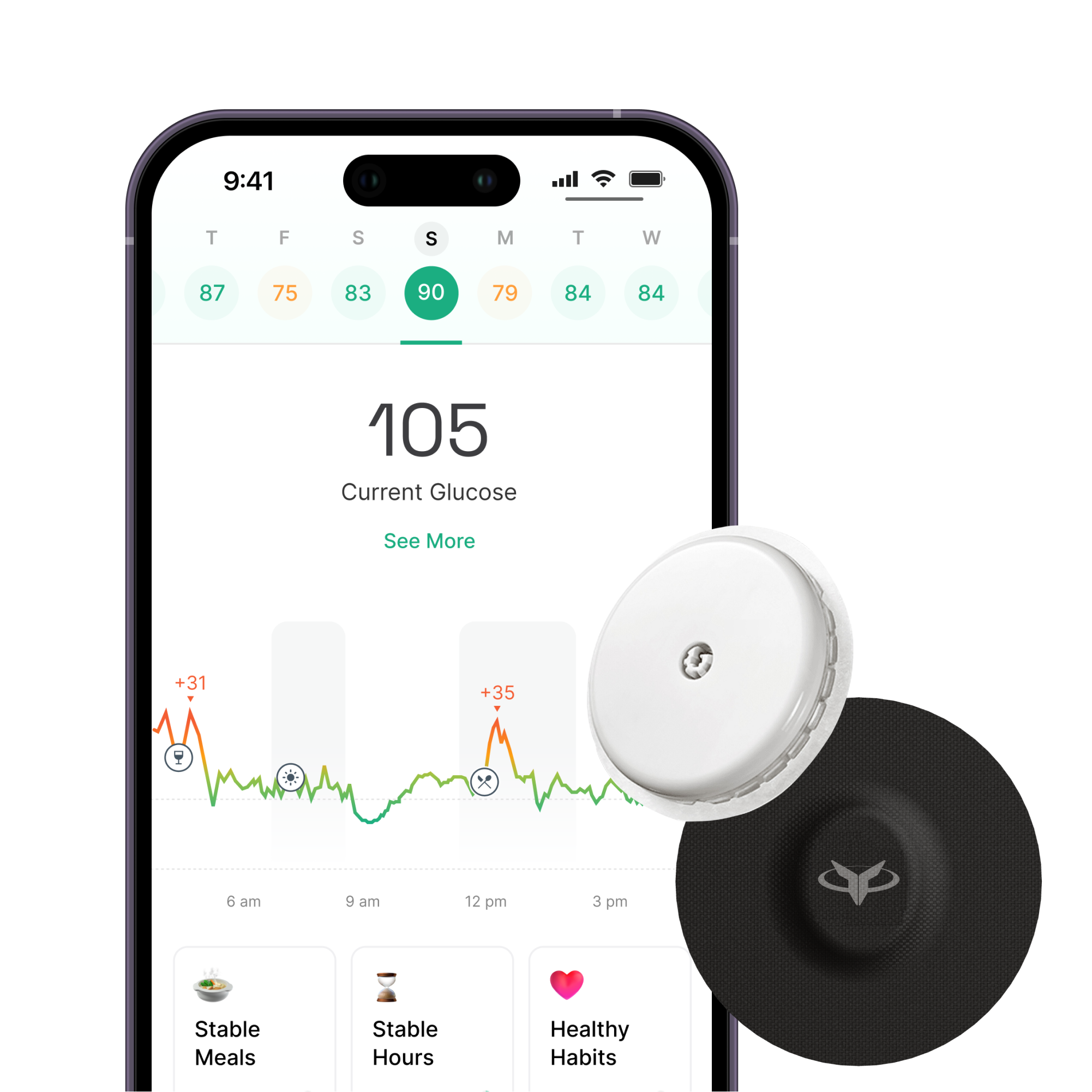Sleep, often taken for granted, is a pivotal element in our daily lives, influencing various health outcomes more than we might acknowledge. It's particularly significant in the context of metabolic health, where it plays a key role in the regulation of glucose, a critical energy source for our body's cells.
Delving into the nuances of how sleep interacts with our body's glucose management system, we uncover insights into why some individuals might experience significant fluctuations in their sugar levels during the night. These insights not only demystify the complexities surrounding sleep and glucose dynamics but also open the door to effective strategies for maintaining a balance. Armed with this knowledge, we can approach our health holistically, recognizing the importance of a good night's sleep in our quest for optimal metabolic function.
Understanding Glucose Levels: A Simple Guide
Glucose, often referred to as blood sugar, is akin to fuel for our bodies. Much like how cars need gasoline to run, our cells rely on glucose for energy to perform every task, from blinking to running a marathon. This sugar comes from the food we eat, and it's transported through our bloodstream to every cell in our body.
But why is maintaining the right amount of glucose so crucial? Imagine your body as a finely tuned machine. Too little glucose, and the machine runs sluggishly; too much, and it can lead to overloads, causing damage over time. Keeping glucose levels in a sweet spot ensures that our body's functions—from the brain's thought processes to the heart's beat—run smoothly and efficiently.
However, when glucose levels frequently soar high or drop too low, it can lead to health issues. High blood sugar levels over time may increase the risk of serious conditions such as diabetes, where the body struggles to manage these levels properly. On the other hand, heart disease can also become a concern, as excess glucose can lead to damage in the blood vessels and nerves. By understanding these basics, we're better equipped to make choices that support healthy glucose levels, benefiting our overall well-being and reducing the risk of these health complications.
The Link Between Sleep and Glucose Levels
When we sleep, our body isn't just resting; it's performing essential maintenance to ensure everything runs smoothly. Among these tasks is the regulation of glucose levels, a process intimately linked with our sleep patterns.
During sleep, the body goes through cycles of deep and REM (rapid eye movement) sleep. It's during these cycles that the body regulates various hormones affecting glucose metabolism. Insulin, a hormone released by the pancreas, plays a starring role here. Its job is to help cells throughout the body take in glucose from the bloodstream, using it for energy or storage, which in turn lowers blood sugar levels to a healthy range.
However, when our sleep is cut short or disrupted, this hormonal harmony is thrown off balance. The body's response to insulin can become less effective, a condition known as decreased insulin sensitivity. This means that glucose stays in the bloodstream longer than it should, leading to elevated blood sugar levels. Over time, if sleep disturbances continue, this can lead to chronic insulin resistance, a risk factor for type 2 diabetes.
Moreover, lack of sleep can increase the release of stress hormones like cortisol, which further complicates glucose regulation. Cortisol can make cells even less responsive to insulin. Additionally, poor sleep may influence our dietary choices, leading us to crave high-sugar, high-carbohydrate foods, which can spike blood sugar levels.
The relationship between sleep and glucose is also bidirectional. Just as poor sleep can lead to changes in glucose levels and metabolism, high blood sugar can disrupt sleep patterns, creating a cycle that's challenging to break. High glucose levels can lead to increased urination during the night, disrupting sleep, or cause discomfort and restlessness, preventing deep, restorative sleep cycles.
Understanding this complex relationship highlights the importance of prioritizing quality sleep as part of a holistic approach to health. It's not just about the quantity of sleep but also its quality. Ensuring a consistent sleep schedule, optimizing the sleep environment for comfort and relaxation, and addressing any sleep disorders are crucial steps in maintaining not only good glucose regulation but overall health and well-being.
Main Causes of Sugar Spikes During Sleep
Understanding why blood sugar levels can spike during sleep involves exploring several key factors, each contributing in its own way. Let's delve into each cause more deeply:
- Hormonal Fluctuations and the Circadian Rhythm
Our body operates on a 24-hour cycle known as the circadian rhythm, which affects everything from when we feel sleepy to how our hormones are regulated. This rhythm is crucial for managing the release of hormones, including those that impact glucose levels. For example, growth hormone, which aids in growth and cell repair during deep sleep, can inadvertently cause blood sugar levels to rise. This increase occurs because growth hormone reduces the effectiveness of insulin, making it harder for cells to take up glucose from the blood, leading to higher blood sugar levels.
- Nocturnal Hypoglycemia and Counter-Regulatory Response
Sometimes, a drop in blood sugar occurs during the night, a condition known as nocturnal hypoglycemia. This drop can activate the body's counter-regulatory mechanisms, which aim to raise blood sugar levels back to a safe range. The liver responds by releasing stored glucose into the bloodstream. However, this well-intentioned response can overshoot, leading to a spike in blood sugar levels, rather than a return to normalcy.
- The Dawn Phenomenon
The dawn phenomenon is a natural rise in blood sugar levels that occurs in the early morning hours, as the body prepares to wake up. This increase is due to the release of hormones like cortisol and glucagon, which help to energize the body for the day ahead. While these hormones are crucial for helping us start our day, they also make our cells more resistant to insulin during their release, leading to an uptick in blood sugar levels for many individuals.

- Lifestyle Factors: Late-Night Eating and Snack Choices
Our eating habits, especially before bedtime, can significantly influence nocturnal blood sugar levels. Consuming high-sugar or high-carbohydrate foods close to bedtime can cause blood sugar levels to spike because these foods cause a rapid increase in glucose. This is particularly impactful at night when the body's insulin sensitivity is naturally lower. Additionally, late-night eating disrupts the body's natural fasting period, further complicating glucose regulation.

Manage Sugar Spikes During Sleep
- Adopting a Consistent Sleep Schedule
A consistent sleep schedule isn't just about getting enough hours of sleep; it's about syncing with your body's natural clock, or circadian rhythm. This rhythm influences your body's functions, including hormone release and glucose metabolism. By going to bed and waking up at the same times every day, you help your body regulate these processes more efficiently, reducing the likelihood of unexpected sugar spikes. Think of it as resetting your body's clock to work in your favor, optimizing hormone regulation and glucose levels.

- Monitor Your Diet
What you eat and when you eat can significantly impact your blood sugar levels, especially before bedtime. To prevent nocturnal glucose spikes:
Avoid heavy meals, high-sugar, and high-carb snacks before bedtime, as they can cause blood sugar levels to rise sharply, disrupting your body's natural fasting state during sleep.
Opt for a balanced dinner with a mix of protein, healthy fats, and fiber-rich carbohydrates that release glucose slowly into the bloodstream, providing a more stable energy source without spiking your sugar levels.
If you need a snack close to bedtime, choose low-glycemic options like a handful of nuts, a slice of cheese, or a small serving of plain yogurt. These snacks are less likely to cause a significant increase in glucose levels.

- Incorporating Regular Physical Activity
Regular exercise is a powerful tool for improving insulin sensitivity, which means your cells are better able to use the available insulin to take up glucose from your bloodstream. This results in more stable blood sugar levels. Here’s how to integrate exercise effectively:
Aim for a mix of aerobic exercises (like walking, swimming, or cycling) and resistance training (like weight lifting or bodyweight exercises) several times a week.

Consider timing your exercise; some find that engaging in physical activity earlier in the day can help regulate glucose levels for the rest of the day and night.
Consistency is key. Even moderate, regular physical activity can have cumulative benefits for glucose regulation and overall health.
- Regular Blood Sugar Monitoring
In the quest to manage nocturnal glucose spikes effectively, equipping yourself with the right tools can make all the difference. This is where the concept of continuous glucose monitoring (CGM) comes into play, offering a window into the real-time fluctuations of your blood sugar levels. For those navigating the complexities of glucose regulation, a device like the Actofit Pro Plus can be a revelation.
Imagine having the ability to track how different factors—your dinner choices, your evening workout, or even the timing of your last snack—impact your glucose levels as you sleep. The Actofit Pro Plus brings this vision to life, providing continuous, real-time glucose monitoring. This isn't just about numbers; it's about gaining insights into your body's unique rhythms and responses, empowering you to tailor your lifestyle for optimal glucose regulation.

Designed for everyday life, this small, wearable device integrates seamlessly into your routine. Whether you're hitting the gym, taking a shower, or diving into the pool, its water-resistant design means it's always there, quietly working in the background. This constant companionship allows you to make informed, on-the-spot decisions about your health, based on how your body is reacting in the moment.
By understanding the patterns behind your glucose levels, you're better positioned to make adjustments that can smooth out those nocturnal spikes. Perhaps it's tweaking your dinner composition, adjusting your exercise timing, or reevaluating that late-night snack. The Actofit Pro Plus doesn't just monitor; it educates, guiding you toward choices that support stable blood sugar levels throughout the night and into the dawn.
Conclusion
In our exploration of the intricate dance between sleep and glucose levels, we've uncovered the multifaceted reasons behind nocturnal sugar spikes and delved into effective strategies for managing them. The journey to understanding and mitigating these spikes is deeply personal and requires a nuanced approach. It's clear that a combination of maintaining a consistent sleep schedule, mindful eating, regular physical activity, and vigilant monitoring of glucose levels forms the cornerstone of this management. Yet, it's the integration of innovative tools like the Actofit Pro Plus that brings a new dimension of awareness and control over our health. This device not only empowers us with real-time data but also encourages a proactive stance towards our wellness journey.
As we conclude, let's acknowledge the power of knowledge and technology in transforming our health outcomes. The Actofit Pro Plus exemplifies how advancements in health tech can support our goals of achieving balanced glucose levels and, by extension, a better quality of life. Embracing these tools and strategies with open arms and an open mind paves the way for a future where managing health conditions becomes more intuitive and aligned with our daily lives. Ultimately, our health journey is a mosaic of choices, habits, and interventions. By carefully selecting the pieces that best fit our individual needs, including leveraging cutting-edge technology, we can craft a holistic strategy that supports not just our glucose levels, but our overall well-being.




